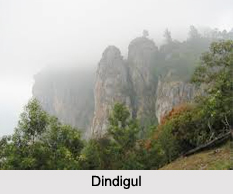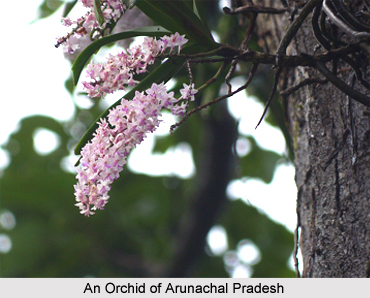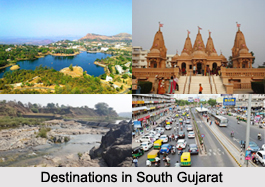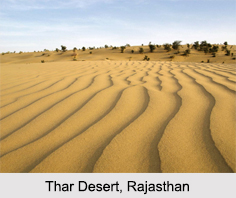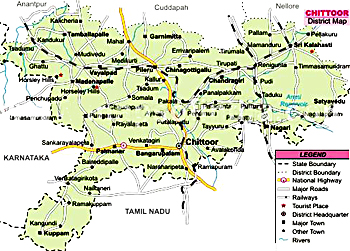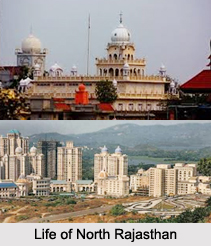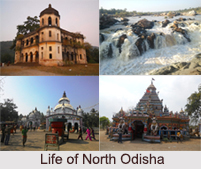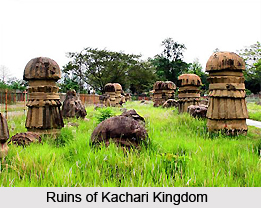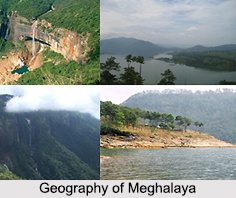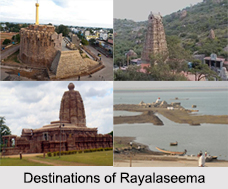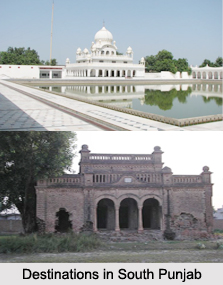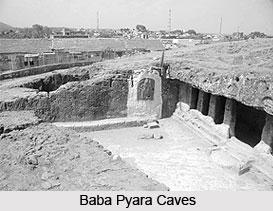 Baba Pyara caves are laying close to the Modhimath, which has four caves in its northern group. The next set of south group caves has a unified plan with a spacious court and a Chaitya hall.
Baba Pyara caves are laying close to the Modhimath, which has four caves in its northern group. The next set of south group caves has a unified plan with a spacious court and a Chaitya hall.
Baba Pyara caves portrays the traditional artistic excellence of kings of Satavahana Dynasty. The architectural beauty of Satavahana Dynasty has the influence over these cave pillars and door jambs of the caves.
It is believed that Baba Pyara caves belong to 1st to 2nd century AD. These have 13 rooms in three stories, cut into the rock 45 m. (150 ft.) high and adorned with carvings of Buddhist symbology. Baba Pyara caves are carved at about 1900 years ago. These caves are next to the Adi-Kadi Vav, another place of architectural excellence of Hindu kingdoms.
Baba Pyara caves attract tourists from across the world and it is a reminder of the growth and popularity of Buddhist cult as it existed in earlier times. Baba Pyara caves represent the sites carved out to provide residential facilities for the monks to live in. These caves are carved in stone and these rooms were the comfortable quarters for the practitioners of Buddhism. They date back to over 2000 years in history and have been a focal point of attraction for pilgrims, tourists, students, historians and those looking for more information and resources for their research material.
The caves at Baba Pyara and Khapara Kodia were built as chambers separated into a west-east longitudinal crest. These were used as shelters during the rains. Baba Pyara caves are carved during the rule of Ashoka, the Maurayan Emperor, these structures have been labelled as the oldest and most famous monastic settlements in Junagadh district of Gujarat.
The caves at Baba Pyara were carved out of living rock and were put to use for many years. However, over time they were abandoned as cracks in their walls led to unwarranted seepage of water, making them unusable. According to folklores, the monks who abandoned these caves went on to carve more elaborate and similar structures in Maharashtra. The remains of Baba Pyara stand stoic in time and lure tourists with their stories and tales of the past.
Baba Pyara caves have been cut into a rock which is approximately 150 ft high. The carvings of Baba Pyara caves connected with Buddhist symbols adorn the walls at Baba Pyara and are a source of teachings and works of Gautama Buddha.
These caves are maintained and more intact than their counterparts in Khapara Kodia Caves. The Khapra and Baba Pyara cave complexes are renowned for intricate carvings on six pillars that adorn these sites.
Visiting Information
Baba Pyara caves can be reachable by rail, road and air ways. One need to go to Junagadh to visit the Baba Pyara caves. The tourists interested in reaching Junagadh by air have to avail of the services of Keshod Airport, which is located at a distance of 40 km from the heart of the city. The other airports are located at Rajkot and Porbandar. These airports are located at a distance of 99 km and 113 km respectively. The tourists travelling to Junagadh by train prefer to board the day express train which runs on the Ahmedabad-Veraval line. The train links from Ahmedabad, which is 7.5 hours away. Junagadh lies at a distance of 327 km from Ahmedabad and approximately 113 km from Porbandar.







